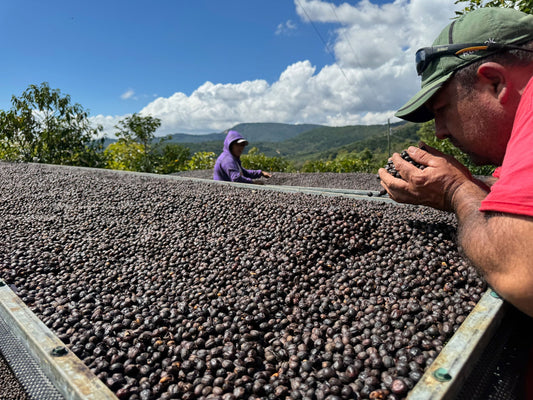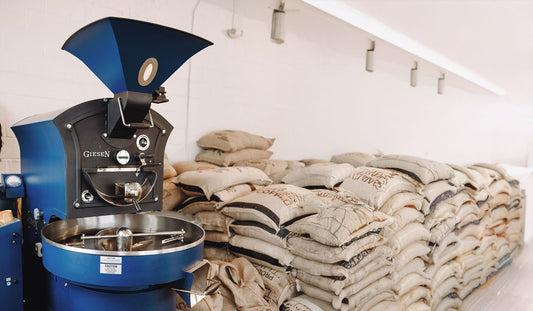For a coffee plant leaf, it’s a tough world out there. Meet the Blight and Phoma leaf diseases.
The Basics
Blight is a term that covers several diseases causing plants to wither and die rapidly. Think of it as a fast-spreading cold. On coffee plants, blight leads to darkened leaves, wilting branches, and an overall appearance of despair. The pathogens responsible for blight thrive in moist conditions, making coffee-growing regions particularly susceptible.
Phoma leaf spot, on the other hand, caused by the fungus Phoma spp., presents as small, dark lesions on coffee leaves. These spots can enlarge over time, leading to extensive leaf damage and, ultimately, defoliation. We know how that story ends. And like blight, Phoma thrives in moist environments and can spread rapidly across a farm, facilitated by rain splash, contaminated tools, etc.
Lifecycle and Spread
The lifecycle of these pathogens is intricately linked to environmental conditions. For blight-causing fungi, spores are spread by wind or rain splash, finding easy entry points in plants weakened by environmental stress or mechanical damage. After infection, the fungi colonize the plant tissue, leading to symptom expression and further spore production, which continues the cycle of the disease.
Phoma leaf spot follows similarly, with its spores germinating in wet conditions to infect coffee leaves. The disease cycle is fueled by periods of heavy rain, which facilitate spore spread and infection. However, the subsequent drought conditions can weaken coffee plants, making them more susceptible to disease when the rain returns.
Some Memorable Visits
A fairly recent 2022 visit to a Costa Rica farm, where the producer was in the middle of grappling with a sudden outbreak of blight. It started with a few leaves here and there, but within weeks, entire plants looked as if they had been scorched by fire. Carlos, who had been farming coffee for over 30 years, was completely stumped. The speed and ferocity of the outbreak on his farm were unlike anything that even he had seen before.
Over the next few days, a team of local agricultural experts were called, who identified the cause and implemented a rescue plan involving careful pruning, improving air circulation, and periodic fungicide applications. Slowly but surely, the coffee plants started to recover. But for the producer, this experience was a wake up call, to implement better farm management, and the need for sustainable practices.
On another visit, we learned from Esther, a Kenyan farmer, a unique strategy to control the Phoma outbreak. From the help from the community, she quickly started intercropping the coffee with fast-growing legumes, which helped block spore movement. This natural barrier reduced the incidence of Phoma spots significantly, proving the power of biodiversity as a defense mechanism.
Fighting Back
Controlling blight and Phoma requires a mix of good old-fashioned farming experience and modern science. Crop rotation, resistant varieties, and meticulous sanitation practices (like cleaning your tools and boots) are the first line of defense. Fungicides have their place, but with sustainability in mind, many farmers are willing to return to biological control options and cultural practices in case of outbreaks.
For instance, ensuring proper distancing improves air flow between plants and reduces unnecessary moisture – a simple yet effective strategy. And the potential of biofungicides, which use natural organisms or substances to keep pathogens in check.
Why Should You Care?
Blight and Phoma might not grab headlines like coffee rust, but they're just as worthy of our attention. At least for smaller producers, the devastation of seeing crops wither under these diseases carries a weight similar to witnessing a family member fall ill, deeply impacting their emotional and economic well-being.
We applaud our farmers who silently fight crop diseases like blight and Phoma, all to ensure that coffee we get is nothing short of exceptional.



